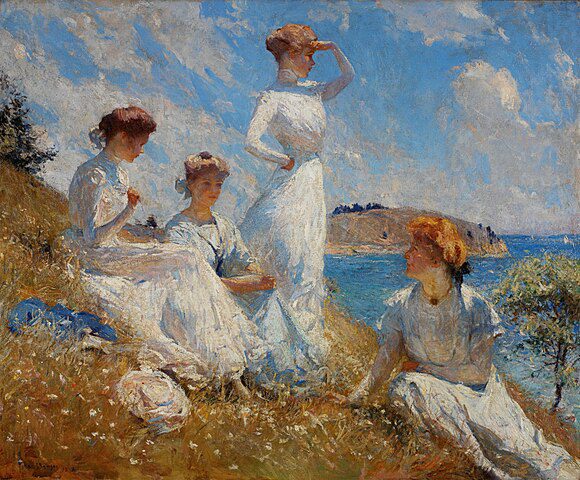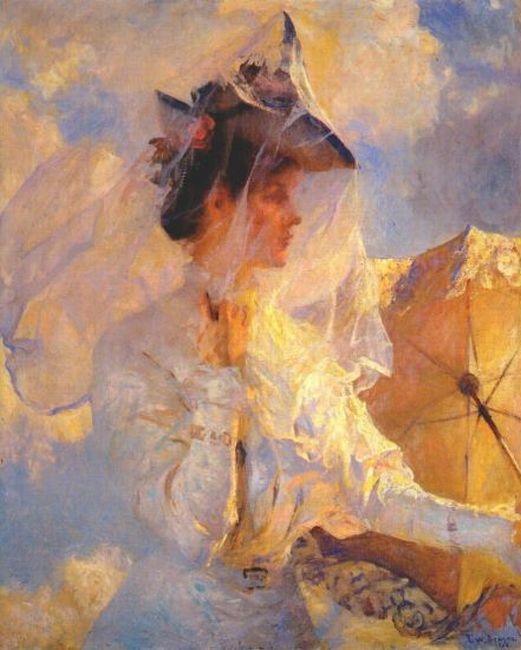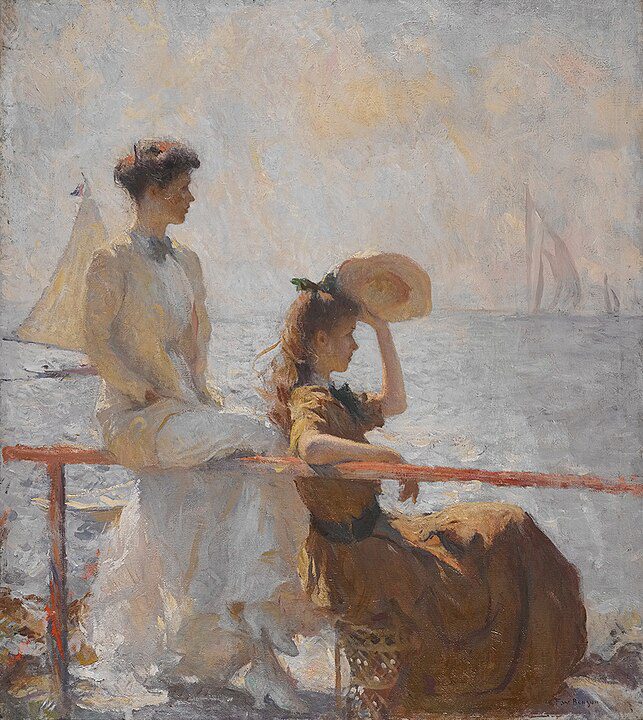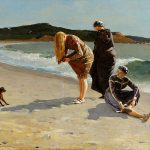
Frank Weston Benson, born on March 24, 1862, in Salem, Massachusetts, emerged as one of the most revered American Impressionist painters, known for his luminous outdoor scenes, elegant portraits, and vibrant depictions of wildlife. His work, characterized by a masterful use of light and color, captures the transient effects of sunlight on his subjects, embodying the quintessential qualities of American Impressionism. Benson’s art reflects a deep appreciation for nature and an exquisite skill in portraying the delicate interplay of light and shadow.

Benson’s artistic journey began at a young age, influenced by his family’s appreciation for the arts. He pursued formal education in art at the School of the Museum of Fine Arts, Boston, and further honed his skills at the Académie Julian in Paris. This European training exposed him to the works of the French Impressionists, whose techniques and subject matter would have a profound influence on his development as an artist. Upon returning to America, Benson, along with fellow artists including Edmund Tarbell and Joseph DeCamp, became a central figure in what would be known as the Boston School, a group known for their refined, Impressionistic approach to painting.
Idyllic Settings
Throughout his career, Benson was celebrated for his portraits, often depicting his family members in serene, idyllic settings that showcase his skill in capturing the subtleties of light and atmosphere. However, it was his outdoor scenes, filled with shimmering light and vibrant colors, that truly distinguished his work and aligned him with the American Impressionist movement. These paintings, frequently featuring women and children in leisurely, sun-dappled landscapes, exude a sense of tranquility and timeless beauty.

In addition to his Impressionist works, Benson was an avid sportsman with a profound love for the outdoors, which inspired his remarkable series of wildlife paintings and etchings. These works, particularly his dynamic portrayals of birds in flight, are noted for their precision and vitality, reflecting Benson’s keen observation of nature and his ability to convey movement and life within his compositions.
Influencing Generations
Benson’s contributions to American art extend beyond his own creations. As a dedicated educator, he taught for many years at the School of the Museum of Fine Arts, Boston, influencing generations of artists with his emphasis on direct observation and the study of nature. His role as a teacher and mentor helped propagate the principles of Impressionism within the American art scene, cementing its place in the country’s artistic heritage.
Throughout his life, Benson received numerous awards and honors, reflecting his status as a leading figure in American art. His work was widely exhibited and collected, both in the United States and abroad, and today, his paintings are held in the collections of major museums, serving as testament to his enduring legacy.

Frank Weston Benson passed away on November 15, 1951, in Salem, Massachusetts, leaving behind a body of work that continues to captivate and inspire. His ability to capture the fleeting moments of light and color, combined with a deep reverence for nature and a profound understanding of human character, positions him as a pivotal figure in the history of American Impressionism. Benson’s paintings not only reflect the beauty of the world around him but also evoke a sense of peaceful contemplation, inviting viewers to share in the serene and luminous moments he so skillfully immortalized.




